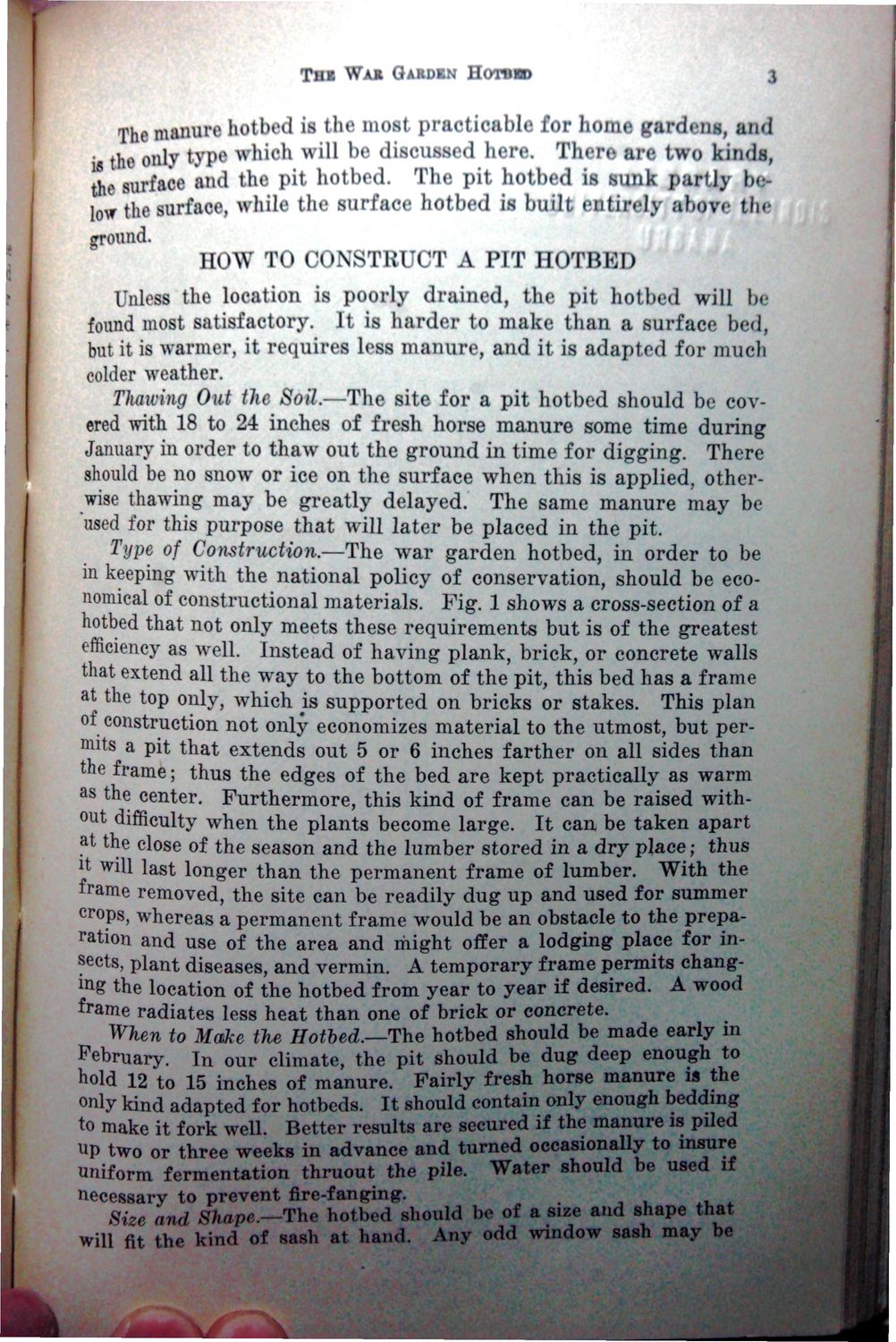| |
| |
Caption: War Publications - WWI Compilation 1923 - Article 45
This is a reduced-resolution page image for fast online browsing.

EXTRACTED TEXT FROM PAGE:
TIIK WAS GAMIN HOTMD 3 xdem, and There are two kinds, type tJie^surface and the pit hotbed. The pit hotbed is sunk entirely f around. PB1 " Unless the location is poorly drained, the pit hotbed will be found most satisfactory. I t is harder to make than a surface bed, but it is warmer, it requires loss manure, and it is adapted for much colder weather. Thawing Out the Soil.—The site for a pit hotbed should be covered with 18 to 24 inches of fresh horse manure some time during January in order to thaw out the ground in time for digging. There should be no snow or ice on the surface when this is applied, otherwise thawing may be greatly delayed. The same manure may be used for this purpose that will later be placed in the pit. Type of Construction.—The war garden hotbed, in order to be in keeping with the national policy of conservation, should be economical of constructional materials. Fig. 1 shows a cross-section of a hotbed that not only meets these requirements but is of the greatest efficiency as well. Instead of having plank, brick, or concrete walls that extend all the way to the bottom of the pit, this bed has a frame at the top only, which is supported on bricks or stakes. This plan of construction not only economizes material to the utmost, but permits a pit that extends out 5 or 6 inches farther on all sides than the frame; thus the edges of the bed are kept practically as warm as the center. Furthermore, this kind of frame can be raised without difficulty when the plants become large. I t can be taken apart at the close of the season and the lumber stored in a dry place; thus ^ will last longer than the permanent frame of lumber. With the frame removed, the site can be readily dug up and used for summer crops, whereas a permanent frame would be an obstacle to the preparation and use of the area and might offer a lodging place for insects, plant diseases, and vermin. A temporary frame permits changing the location of the hotbed from year to year if desired. A wood frame radiates less heat than one of brick or concrete. When to Make the Hotbed.—The hotbed should be made early in February. In our climate, the pit should be dug deep enough to hold 12 to 15 inches of manure. Fairly fresh horse manure ia the only kind adapted for hotbeds. It should contain only enough bedding to make it fork well. Better results are secured if the manure is piled up two or three weeks in advance and turned occasionally to insure uniform fermentation thruout the pile. Water should be used if necessary to prevent fire-fanging. Size and Shape—The hotbed should b« of a size and shape that will fit the kind of sash at hand. Any odd window sash may be
| |